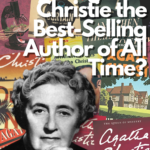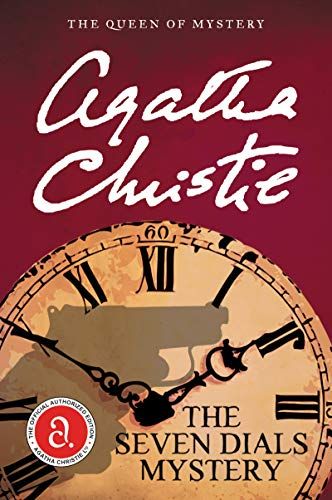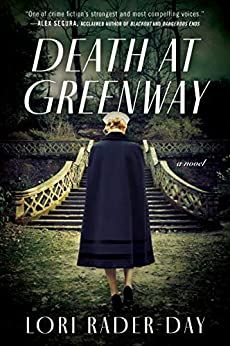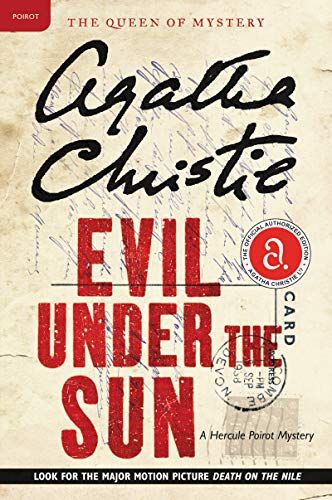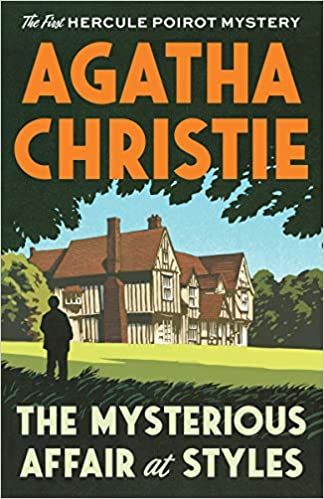My introduction to Agatha Christie started with The Seven Dials Mystery, one of her more underrated books, in which a group of people gather together to decide to get someone to wake up on time, only to find that person dead instead. After reading through that book, I passed it to all my friends and we made a pact to each borrow an Agatha Christie with our limited borrowing capabilities and all read them before they were all due. We would pass them around in torn plastic bags during long lectures and on breaks, and rush through our pile only to make a new one the next time we had a chance. Since then, I have read close to 35 Agatha Christie books, and I still cannot seem to get enough. I collect vintage editions of her books whenever I can and only recently purchased Endless Night to read through a long flight. After looking around, though, it seems I am not the only one who remains enamored with her works. With books like The Mystery of Mrs.Christie and Death at Greenway continuing to be published, it seems Christie’s life, works, and all that surrounded her have a long life ahead of them. It does make one wonder: what it is that makes the work of Agatha Christie so timeless? Let’s explore.
Characters and Conversations
No discussion of Agatha Christie is complete without mentioning her two most iconic, recurring characters: Hercule Poirot and Miss Jane Marple. With 33 of Christie’s works featuring Poirot and 18 featuring Miss Marple, it is fair to say that these characters are her claim to fame. These two characters also divide her works into the different kinds of crime novels that she wrote — with one through the eyes of a retired police officer, following a more procedural plot, and the other through the eyes of a relatively amateur sleuth. Apart from the engaging characters, it is Christie’s dialogue that often propels the plot forward and that helps the reader envision the various characters. It’s not so much as what the characters are doing but how those actions are perceived by those present that forms the crux of her stories. In her Jane Marple mystery The Sleeping Murder, we form the entire perception of our heroine through Miss Marple’s eyes, leaving the door wide open for the truth to fill in the gaps.
Scenes and Settings
Foreign travel and settings outside of England were frequent in Christie’s works. This in turn is a large part of her appeal and adds to the layer of escapism that marks her works. In Murder on the Orient Express, the entirety of the plot takes place on a train and parts of Turkey, coming to life with vivacity. Evil Under the Sun is another work where the tropical vacation atmosphere hints at the sinister events about to unfold. Christie was not only skilled at writing about foreign locations, but explored the English countryside and its sinister layers deftly. In her brief foray into what we now term as women’s fiction, written under the pseudo name of Mary Westmacott, we see a different side of her capabilities.
Plots and Puzzles
Her plots are known for being simple yet surprising in the end. Her works are commonly perceived as complex puzzles and the whole movement of the book serves to bring that puzzle together. Her plot devices are also often critiqued for employing deus ex machinas where, if the plot were to be retraced, the conclusion presented could still not be logically achieved. Even with this criticism, her stories continue to shock and surprise readers.
Criticisms and Critique
Her first work, The Mysterious Affairs at Styles, published right after the First World War, constantly basks in the idea of the loss of a certain kind of lifestyle, of privilege. Older characters are usually placed next to younger ones to draw parallels to what was and what is. This then-and-now constantly serves as literature of changing times whenever it seems there is a transition underway. However, not all legacies are good. Over the past decades, her books have come under the spotlight for misrepresentation of the cultures in which her books are often based. This piece by the Observer discusses how often there needs to be a concept of the “other” and “us” in crime novels, and how for Christie, it was British-ness up against certain kinds of foreign-ness. As the piece aptly states, “her works frequently use racist language and insults in the construction of ideas around criminality and guilt whether through comments or stereotypes.” Many of her books in fact have needed to be re-titled from their initial titles because of their misrepresentative language, including And Then There Were None, A Caribbean Mystery, and Death on the Nile. While this is becoming increasingly apparent, more conversations around how to accept this as part of her legacy rather brushing it under the carpet are needed.
Adaptations and Accolades
A huge role of any author’s work being passed on for years and years is how it translates to film and on stage. With over 40 novels adapted to film and more than 50 adapted for TV series, it is no surprise that her work and legacy live on. As with many series based on books, the book in question usually gets a refresh in cover accompanied by bold marketing efforts. The way I see it, as long as there is cinema, there will be Christie’s works left to be adapted, and more and more people discovering her work. There is a certain kind of ambiguity that pervades Agatha Christie’s works; not quite cozy, and not quite gory, where she is able to cast a wide net to capture all kinds of audience. If you haven’t tried any of her works yet, here is a guide to where to start. If you are looking for more, try these authors like Agatha Christie.
